The Ultimate Guide to Heating and Lighting
In this guide, we'll explore:
Why Heating and Lighting Are Important
Understanding How Lighting Works
Choosing the Right Lighting for Your Terrarium
Types of Bulbs: Lighting vs. Heating
Choosing the Right Heat Source for Your Terrarium
Controllers for Your Lighting and Heating
Whether you're a new owner or a seasoned terrarium caretaker, this ultimate guide will help you better understand the ideal lighting and heating setup, so your pet can be happy and thrive in his terrarium.
Why Lighting and Heating Are Important
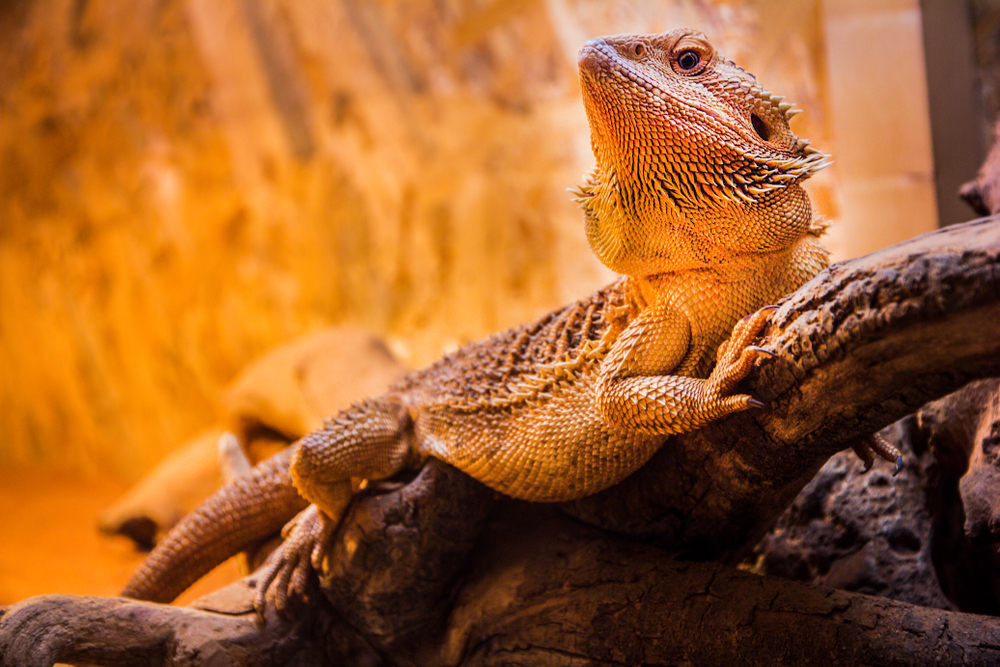
When managing a terrarium, don't take lighting and heating for granted. It's just as important as providing food and water. Your bearded dragon can't check a little clock in the terrarium to see if he should be eating or sleeping. Instead, lighting and heating help keep his circadian rhythm on schedule, letting him know when it's time to rest or be active. His circadian rhythm even impacts how his body releases hormones.
Without this comfort, your little lizard might experience increased stress, hurting his health and happiness.
On top of this, reptiles are cold-blooded. They need heat sources to help them regulate their body temperature. And the temperatures you set should avoid extremes. They shouldn't be so high your reptile overheats, nor should they be so low that their bodily functions become sluggish.
Your pet's specific heating needs vary by species. You may need to do a little research to determine your pet's particular preferences.
Understanding How Lighting Works
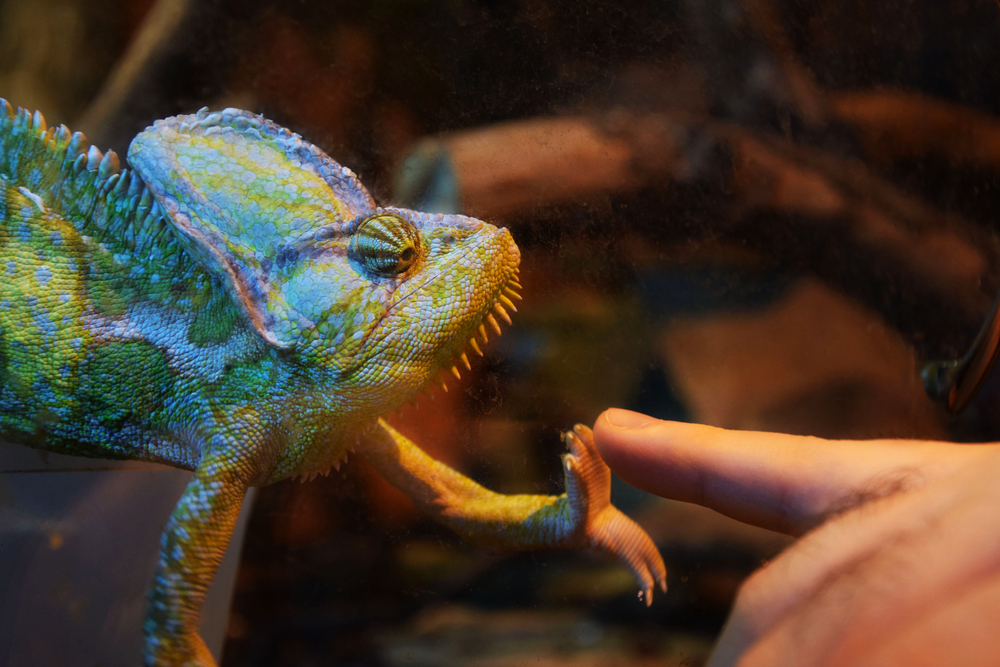
One of the first things you want to understand when picking the lighting for your terrarium is the difference between UVA, UVB, and UVC. All three are varieties of ultraviolet light and found in sunlight. But only the first two play a key role in keeping your pet healthy and happy.
UVA Light
UVA light is closest to our visible light spectrum and is in the reptiles' visible range. It helps reptiles regulate behavior vital for a healthy life, such as mating, feeding, and their day-night activity levels.
UVB Light
UVB light has a slightly shorter wavelength on the light spectrum than UVA, but it's equally important for your reptile friends (even though they can't see it). It helps your pet synthesize vitamin D3, which aids calcium absorption.
Some pets, such as turtles, tortoises, iguanas, and bearded dragons, need higher amounts of UVB. These need a special type of higher-output UVB bulb, but all reptiles and amphibians need some UVB light, typically provided via special fluorescent bulbs.
UVC Light
UVC light is the only UV light that isn't required for reptiles to be healthy and happy. This light plays a role in sterilization and killing bacteria, but high levels of exposure can harm most animals. (You won't find UVC in any UV bulb used for pets.)
Remember that glass and plastic filter UV light. To get the best use of your UV bulbs, you want the bulbs directly exposed to the terrarium habitat rather than set on top of the habitat. (But screen lids will be fine.)
Choosing the Right Lighting for Your Terrarium
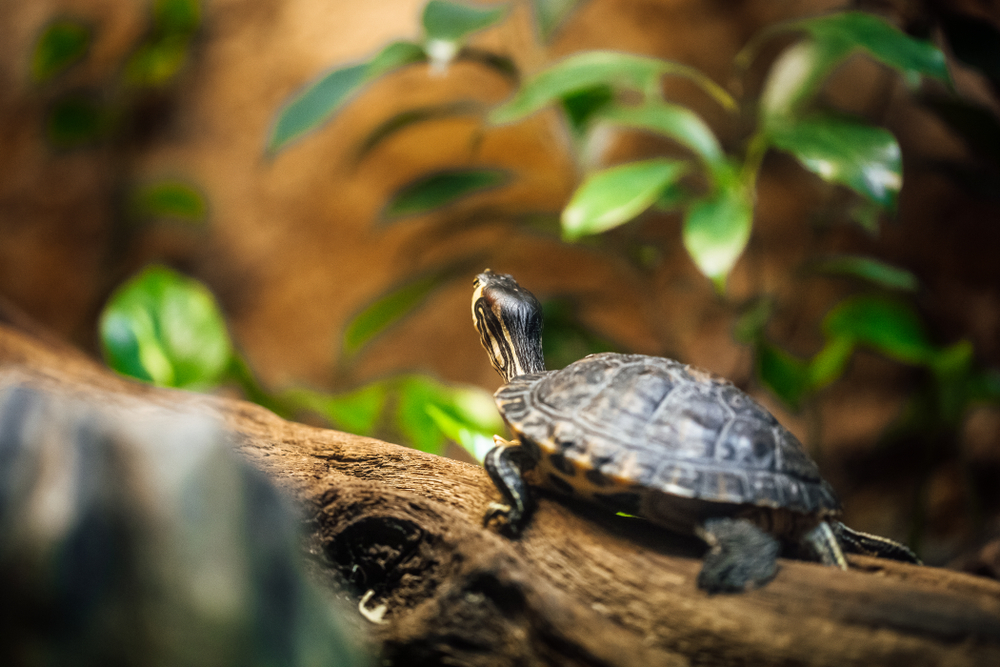
Not just any old light will work for your tiny dino's home. Here are a few things you should consider when choosing a light source for your terrarium.
Consider Your Pet's Natural Habitat
Your pet's natural environment will help inform the type of lighting setup you'll need.
For example, consider bearded dragons. They originate from a desert environment in the Australian outback. UVB lighting is vital to keeping bearded dragons healthy. A good choice for them would be a Heat & UVB fixture that can hold a 50W Mini Halogen Bulb or a fixture that works with a Desert Series 50 UVB Bulb.
One more thing to keep in mind: no matter the climate, environments change with the seasons, and your pet's habitat should as well.
You'll need to do a little research to determine your pet's natural environment. Check out the Habitat Guide from Zilla. It details the best habitat for 35 different reptile species, including the type of UVB/UVA lighting ideal for each.
Diurnal vs. Nocturnal Animals
Reptiles need their beauty sleep, just like you do. So be sure the bulbs you choose match your tiny dino's day and night lifestyles.
Animals active during the day (known as diurnal) need higher amounts of UVB light during daylight hours. Examples of diurnal reptiles include turtles, tortoises, iguanas, chameleons, and bearded dragons. These species of reptiles will benefit from a higher-output UVB bulb. The extra UVB helps regulate calcium levels, but make sure you turn them off at night to avoid too much calcium.
Reptiles with different day/night sleep patterns may not need as much UV. Nocturnal animals (meaning they're more active at night) don't need as much UV light, for example, but they still need some to mimic their day/night cycles. In fact, nocturnal animals (and others) sometimes engage in "cryptic basking," where they hide from predators but still expose parts of their body to the sun for some UV rays.
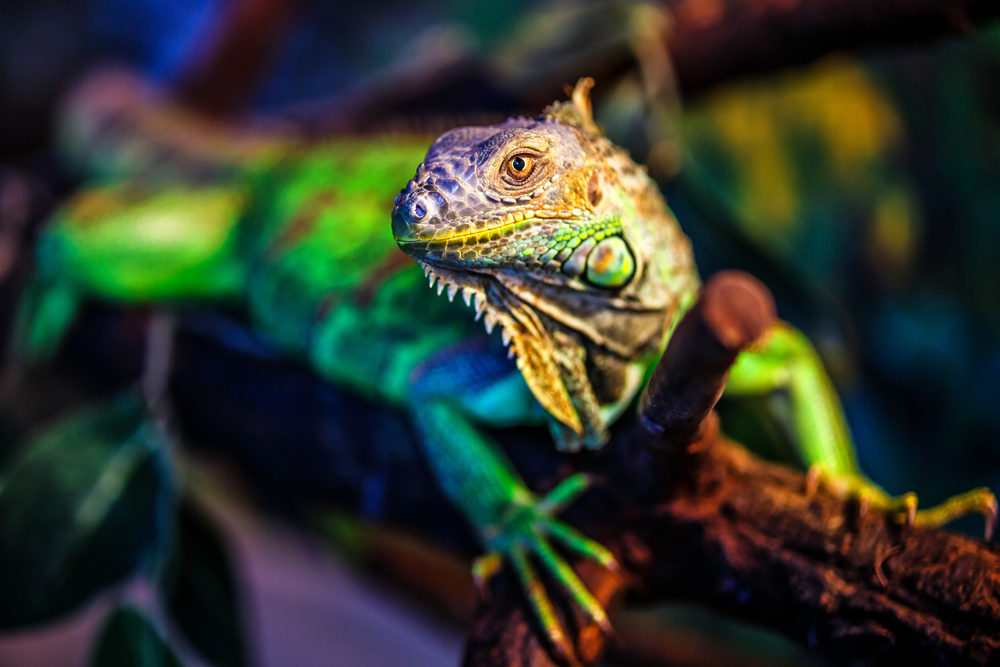
Reptiles can fall into other categories too. Some are crepuscular, meaning they are most active around dawn and dusk, just like pet cats! Examples of crepuscular reptiles include rattlesnakes and Gila monsters, among others.
Then there are cathemeral animals that don't have any real waking or sleeping patterns. Instead, their cycle may change based on seasons or food availability. Some frogs, for example, can be considered cathemeral. While these may not need as much UV light as a diurnal animal, they still need some, so it's best to have lighting that mimics the day-night schedule of their environment.
Because lighting needs and sleep cycles can vary so much from species to species, it's best to research your pet's species to find out its natural preferences. Check out the Zilla care sheets for a variety of species, which may include details on when reptiles and amphibians are most active.
Should You Factor in Day/Night Cycles?
You should absolutely factor in the day-night cycle when considering how you use your light bulbs. A day/night cycle is vital for your pet to maintain a healthy circadian rhythm.
For example, bulbs should be turned off at night and used during the day. It's a good idea to leave them on for 12 hours and turned off for 12 hours. Be sure to use a special heat source that doesn't emit bright light when it's night.
Remember that each reptile and amphibian species might have slightly different needs when it comes to hours of daytime versus nighttime. You'll want to research your reptile's specific needs to know just how much daylight is best.
Types of Bulbs: Lighting vs. Heating
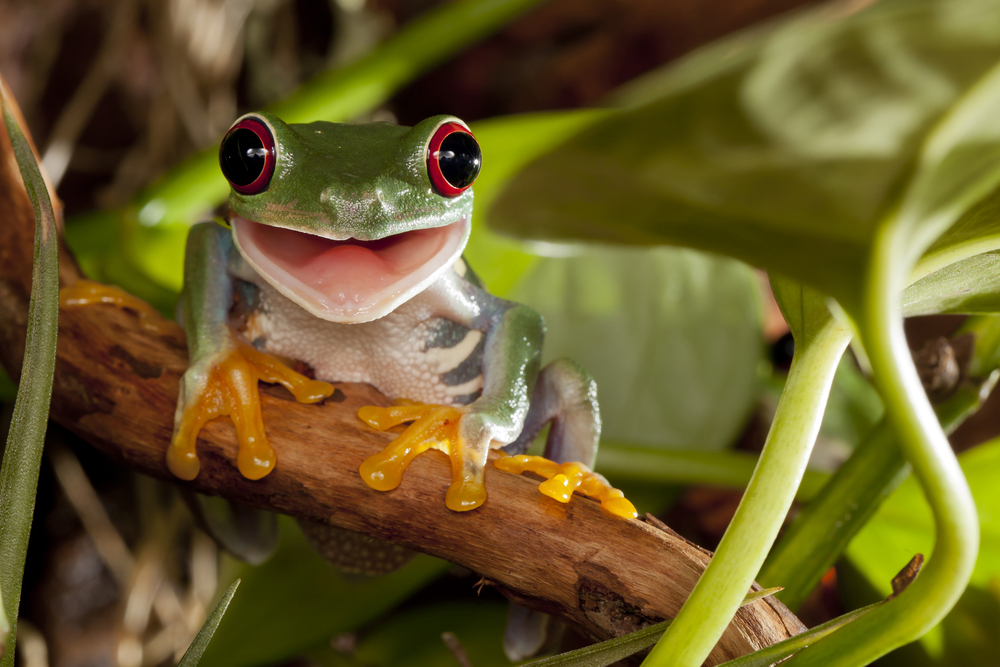
You have many options of lighting and bulbs to choose from when setting up a terrarium to match your cold-blooded buddy's preferred environment. Keep the following in mind as you make your selections.
Different Types of Bulbs
Bulbs for terrariums come in two general categories. Light bulbs provide UVA/UVB (typically fluorescent bulbs), while heat bulbs change the ambient temperature for basking or nighttime heat (typically incandescent or mini halogen bulbs).
Light Bulbs
You'll need to look to fluorescent bulbs to meet your tiny dino's UVA and UVB needs.
Zilla offers fluorescent bulbs in Tropical and Desert varieties, which provide UVA and UVB to match species' special needs. Desert is designed for animals that are used to direct sunlight, like bearded dragons, tegus, and red-foot tortoises. Use Tropical for species that live in the canopy or trees and get more filtered UV, like green iguanas and panther chameleons. The Zilla Habitat Guide breaks down which type of bulb is best for which species.
You can find a number of different types of fluorescent bulbs in these two varieties, including the Zilla T8 Fluorescent Bulbs, Fluorescent Coil Bulbs, and Mini Compact Fluorescent Bulbs.
Heat Bulbs
When picking a heat bulb for your terrarium, you can choose between incandescent bulbs, incandescent spots, and mini-halogen bulbs. All three come in various colors, including day white light, day blue light, night black heat, or night red heat.
Incandescent bulbs provide ambient light and heat that encourage basking, simulating sunlight, and enhancing the natural colors of your reptile's environment. You'll need separate fluorescent lights to meet UVA/UVB needs.
Incandescent spot bulbs, meanwhile, provide more pinpointed light and heat that create focused warm zones. These also need to be used with fluorescent bulbs that provide the UVA and UVB your tiny dino needs.
Mini halogen bulbs are more energy efficient than standard incandescent while providing both light and warmth. Although they don't provide UVB, they often fit into fixtures that also have sockets for UVB bulbs.
The size of your terrarium and your pet's specific temperature needs will help determine the type and wattage of heat bulb needed for your tank. The Zilla Habitat Guide looks at 35 different species and the types of Zilla bulbs that would be best for each.
How Do Day, Night, and Moon Lights Work?
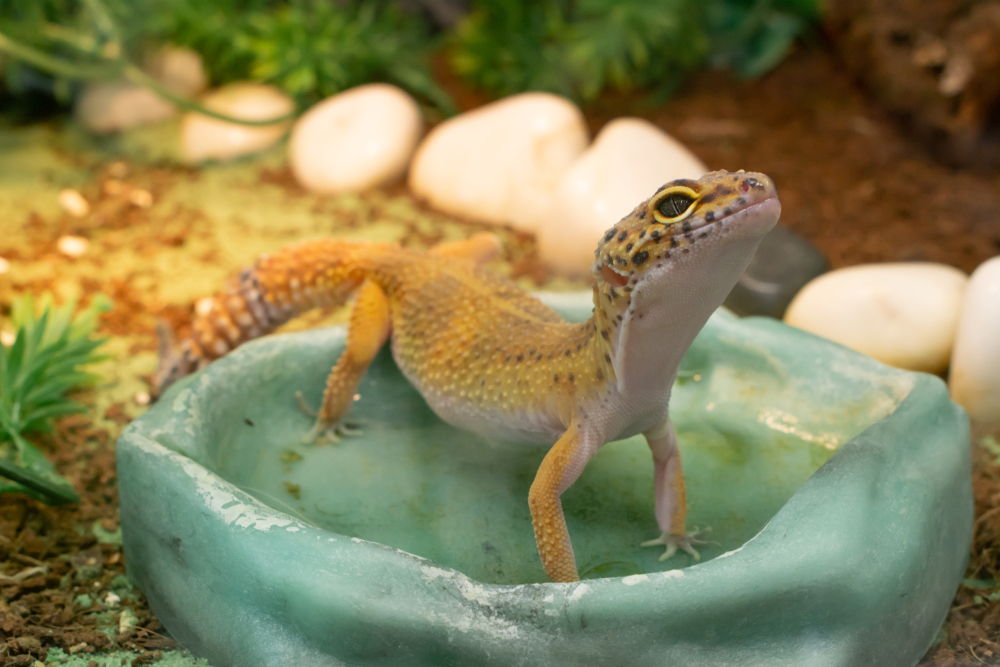
The lighting you provide should mimic day/night cycles, so keep this in mind when choosing bulb colors. It can get a little confusing because you still need to keep in mind the difference between fluorescent and incandescent bulbs.
Zilla refers to its daytime incandescent bulbs as day white light and day blue light in the product description. Day blue brings out colors and gives a unique appearance that you might prefer, depending on the ambiance you want. Just remember: although day white and blue incandescents can provide a nice ambiance during the day, you'll still need fluorescent bulbs to meet your pet's UV needs.
When looking for a light to use at night, make sure you don't use anything that emits a bright light. So you'll want day white and blue incandescent lights turned off, along with fluorescent lights. To avoid interrupting their sleep patterns and still provide warmth, use a non-light heat source, like heat projectors, under tank heaters, or ceramic heat emitters.
If you'd like to watch your nocturnal buddies, like crested geckos, at night, Zilla has incandescent bulbs with options for night black and night red that also provide heat. What's the difference between these black and red bulbs? Red lights give off a low light that lets you see your reptile but isn't likely in the pet's visible color spectrum. However, some people think reptiles might still be able to see the light, so black heat lights emit even less visual light while still providing heat for nighttime. If you're not sure which is best, talk to your exotic animal veterinarian.
Some people even use incandescent blue night lights that might simulate moonlight for a more natural look. However, these tend to emit less heat than red and black varieties.
How Long Do UV Bulbs Last?
UV lights don't last indefinitely. Over time, the UV output from bulbs can diminish, even if they haven't burned out yet. We recommend replacing your fluorescent bulbs every 3,500 hours or around 12 months. (For incandescent bulbs, follow the package instructions regarding replacing the bulbs.)
No matter what type of fluorescent light you use, it's a good idea to use a UV tester to check your bulb regularly to make sure it's still functioning properly. When buying a new light, read the instructions to see how long you should use it before replacing the bulb. Then put a reminder on your calendar or your phone, so you know when it's time to order a new bulb.
Choosing the Right Heat Source for Your Terrarium
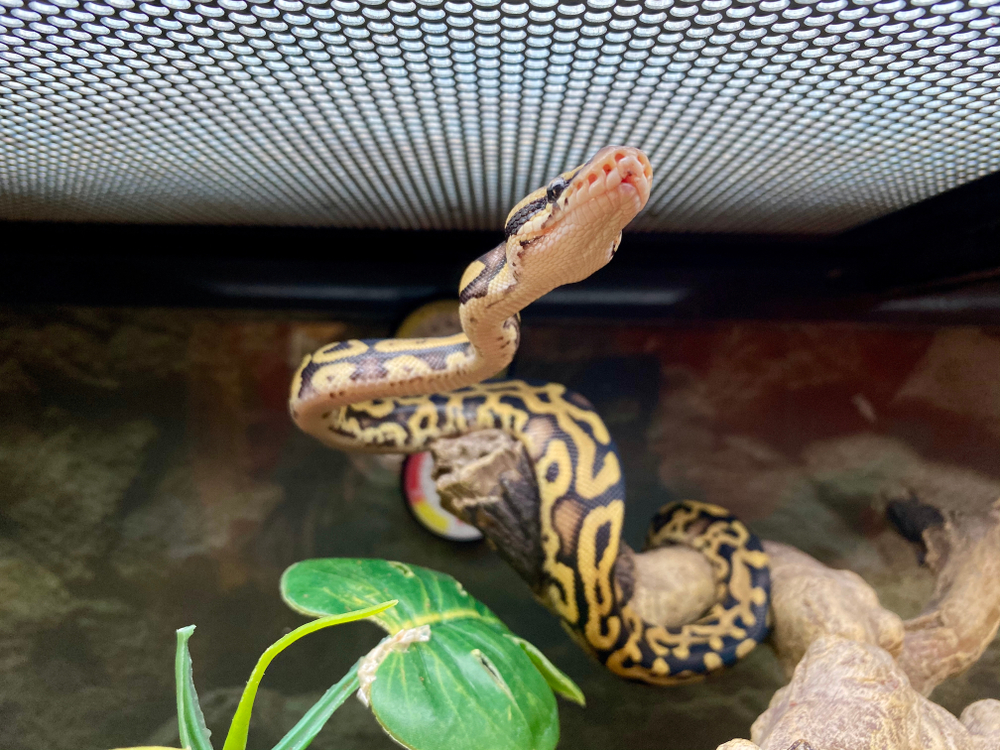
Consider the Size of Your Terrarium
The size and type of heat bulb you need can vary widely depending on your habitat's size. This is important to consider when choosingincandescent heat bulbs for your terrarium.
For example, using a 50-watt incandescent bulb with a 10-gallon tank increases the ambient temperature by 7 to 9 degrees Fahrenheit (when measured at the bottom of the tank, under the bulb). The same size bulb in a 15-gallon tank raises the temperature by just 5 to 7 degrees.
In contrast, a 100-watt bulb in a 40-gallon terrarium increases the ambient temperature by 9 to 12 degrees. The same size bulb in a 30-gallon terrarium increases the ambient temperature by 14 to 17 degrees.
.png?h=66%25&w=100%25&hash=CA7D24F1442DEFD0690B9B5EF5965681)
Find more examples for a variety of bulbs and tank sizes in the Zilla Lighting and Heating PDF.
Set Up a Gradient of Temperatures
When choosing heating sources for your pet, remember that it's best to provide both a warm and cool side in your terrarium, in addition to mimicking the animal's natural day-night cycle. Often referred to as a gradient of temperatures, this "zoning" lets your pet choose how it wants to regulate its body temperature.
Setting up a gradient of temperatures also helps mimic your reptile's instincts. In nature, they tend to bask in the sun when they need warmth and move to the shade when they need to cool down. You can accomplish this same type of gradient by setting up a heat lamp on one end of your tank.
There are three elements to a gradient of temperatures: basking, warm side, and cool side (along with nighttime temperatures).
Basking refers to a small part of the terrarium that's extra warm and will mimic your pet basking in direct sunlight. A terrarium's "warm side" refers to the area just outside that focused basking location, where the temperature is about 10 degrees Fahrenheit cooler. The "cool side" of the terrarium is furthest away from the light source and should never get colder than the minimum recommended average temperature for your little dino. The nighttime temperature should be about the same as the cool side, remaining steady all night.
For example, bearded dragons prefer to bask at 100 to 110°F, with a warm side of about 95 degrees and a cool side/nighttime temperature of about 75 degrees. Meanwhile, ball pythons prefer a basking temperature of 94 to 96°F.
You'll want to set up two thermometers on either side of your tank to monitor the cooler and warmer ends and make sure both are in a healthy range for your cold-blooded buddy.
You'll need to do a little research to determine your pet's ideal temperature needs. Zilla has a Habitat Guide that details 35 species, including their preferred basking temperature range, humidity range, and nighttime temperature range.
Selecting Your Heat Source
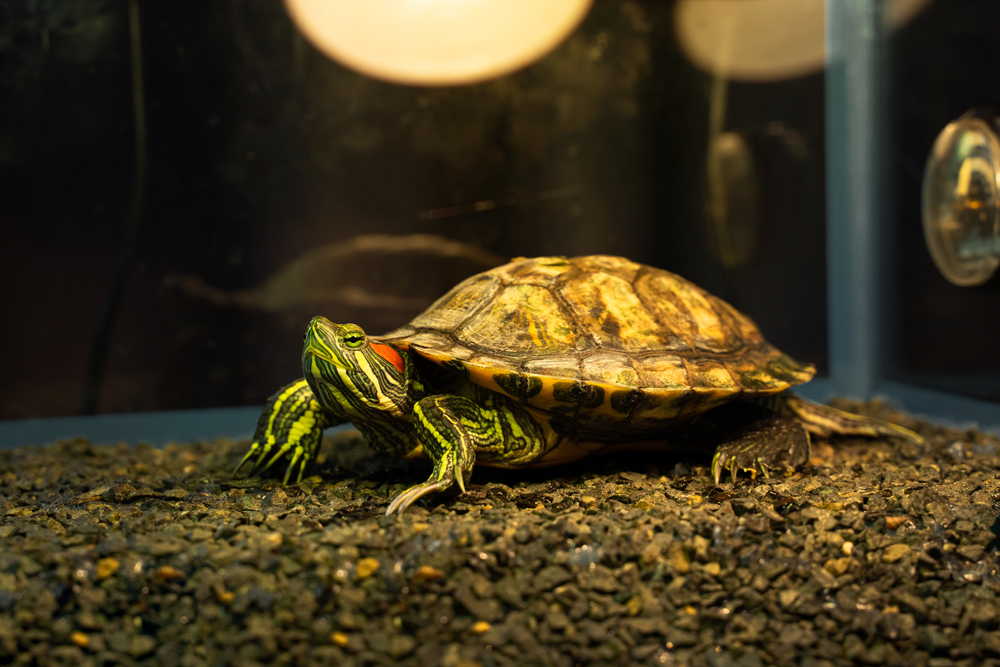
Heat sources come in a variety of types and sizes. Some require incandescent heat bulbs to work. (See "Types of Bulbs" section.) Others are sources that provide only heat, without any light.
1. Heating/Basking Lamps
Heating (or basking) lamps are frequent choices for terrarium owners. They're great for reptiles that love to stretch out under sunlight in their natural environment.
Basking and heating lamps use heat bulbs to create a specific area that concentrates the heat and mimics the effects of your reptile basking in a beam of sunlight. Many come in different wattages, depending on the size of your tank and the reptile species.
For example, the Zilla Heat & UVB Basking Fixture is a great choice for reptiles that need a UVB light and a heated spot for basking. It uses one fluorescent coil bulb and a mini halogen bulb. The Mini Heat & UVB Fixture is a smaller model which works well with mini compact fluorescent bulbs and mini halogen bulbs.
The Pro Sol Light Fixtures from Zilla come with customizable sockets that work with heat, UVA, and UVB bulbs, plus a separate nighttime socket. And it's designed to create a heating gradient.
Pro Tip: Since these bulbs get very hot, it's important that your basking light have a ceramic socket, which all Zilla heat bulbs do. Why? Plastic sockets may melt at the high temperatures heat bulb emit.
Reflector domes and halogen mini domes are simpler heating lamps that just fit one type of heat bulb. One example is the Premium Reflector Dome, designed to be used with a light and heat bulb. It has a ceramic socket to withstand bulbs of up to 150 watts.
Note that there are a few types of basking lamps that don't use light at all. For example, Zilla's Heat Projectors provide 24/7 basking heat but produce no light.
2. Heat Mats/Pads
Heat mats are great for nighttime heat sources since they don't give off a bright light. (They can be used during the day too.) They radiate heat uniformly, so there are no hot spots, and they can be mounted underneath or on the side of a terrarium. These are typically placed beneath the tank but not inside it, providing extra heat without the fear of burns.
The Heat Mat from Zilla regulates itself to a maximum safe temperature of 113°F with an adhesive mounting. It's ideal for desert and tropical reptile species, amphibians, and arachnids. If you use a mat without a regulator, you'll want to regulate it with a thermostat.
3. Aquatic Heaters
Aquatic heaters (sometimes called aquarium heaters) are built specifically for aquatic reptiles like red-eared slider turtles and painted turtles. These heaters are designed to heat water and can be fully submersed.
For example, the Zilla Aquatic Reptile Heater is preset to 78°F and has a protective plastic housing that prevents your reptile from directly contacting the heat source. And the power cord is wrapped in metal in case your pet bites on it. It's great for terrariums up to 40-gallon in size (with 30 gallons of water).
If you want to skip a few steps, you can get a Turtle Aquarium Setup Kit with a glass terrarium, heating and lighting sources (including UVB bulbs), a basking platform, and more.
4. Radiant Heat Panels
Radiant heat panels can work well for more spacious cages. These panels come with a heater inside and attach to the roof of the cage, radiating heat downward. It's best to use a thermostat with it to regulate the temperature.
5. Heat Cable/Rope
When plugged in, heating cables or ropes emit heat and are insulated and water-resistant. They come in different lengths and can be placed in loops to fit your tank size. You can use electrical tape and attach them to the outside of your terrarium. Heat cables or ropes should always be regulated by a thermostat.
6. Heat Tape
Heat tape is sold by the foot and affixed to the outside of your terrarium, not placed inside. It has to be used with a wire clip insulator. It's best not to use it on more than a third of your tank so that you can create the temperature gradient described earlier. Heat tape should always be regulated by a thermostat.
7. Ceramic Heat Emitters
Ceramic heat emitters are great for nighttime heat sources since they don't give off a bright light. They can be used during the day too. These provide penetrating heat that outperforms incandescent bulbs in terms of working life and heat output.
The Mini Ceramic Heat Emitter, for example, produces no light and won't disrupt any sleep patterns, but its radiant heat will increase the temperature of your terrarium.
8. Heat Rocks
While they sound cool, heat rocks are best to be avoided. These can get too hot and burn your reptile's sensitive underbelly. On top of that, they're typically not strong enough to heat the whole tank, even if they can burn your poor lizard.
In general, it's best to avoid any heat sources placed directly inside the tank since they can lead to burns. Some species, like iguanas, are especially sensitive to this.
Controllers for Your Lighting and Heating
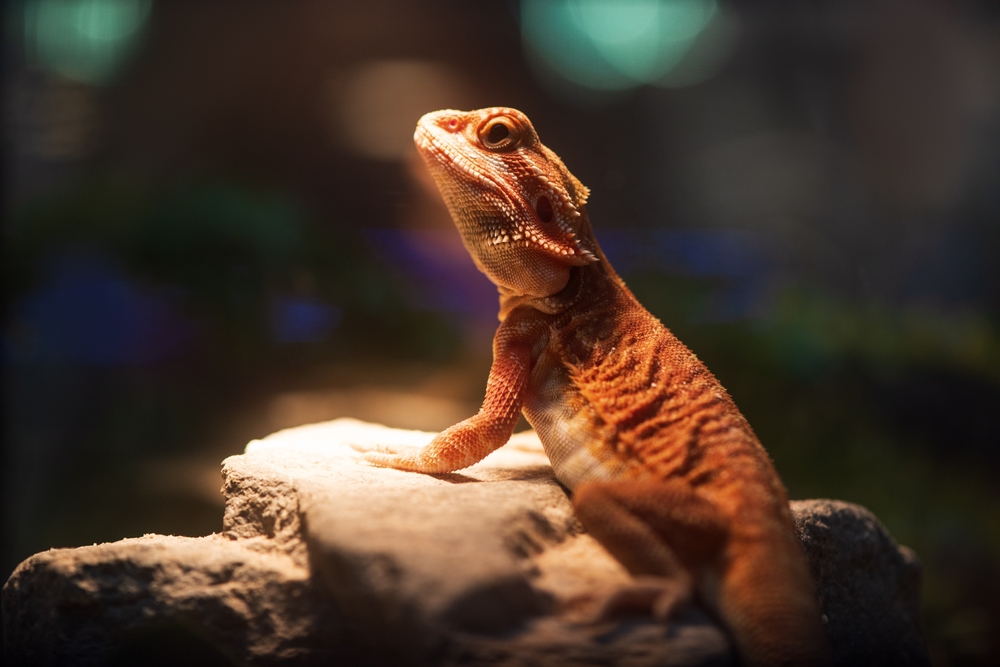
Controllers provide an easy way for you to automate your lighting and heating needs. This ensures your reptiles stay on a steady schedule that doesn't fluctuate from day to day, and you don't have to remember to turn everything on and off yourself.
For Day/Night Cycle
Consider investing in a power center that automatically manages the switch between daytime and nighttime lighting.Zilla has a 24/7 Power Center that controls eight total outlets, including four daytime/nighttime alternating outlets. One power strip can control on/off cycles with easy digital programming.
Thermostats and Hygrometers
Another controller you want in your terrarium is a digital hygrometer-thermometer to monitor your terrarium's temperature and humidity accurately. Thermostats are crucial to maintaining the optimum basking temperature and prevent your dino buddy from overheating. (They also can help prevent fires and other safety concerns.)
Zilla has a Terrarium Thermometer-Hygrometer to keep track of maximum and minimum temperatures, along with relative humidity.
As you can see, there's a lot to consider when setting up the ideal heating and lighting environment for your cold-blooded buddy. But all this research and time is worthwhile in the end! When you see your reptile thriving in his cozy environment, you'll be glad you did your best for him.
